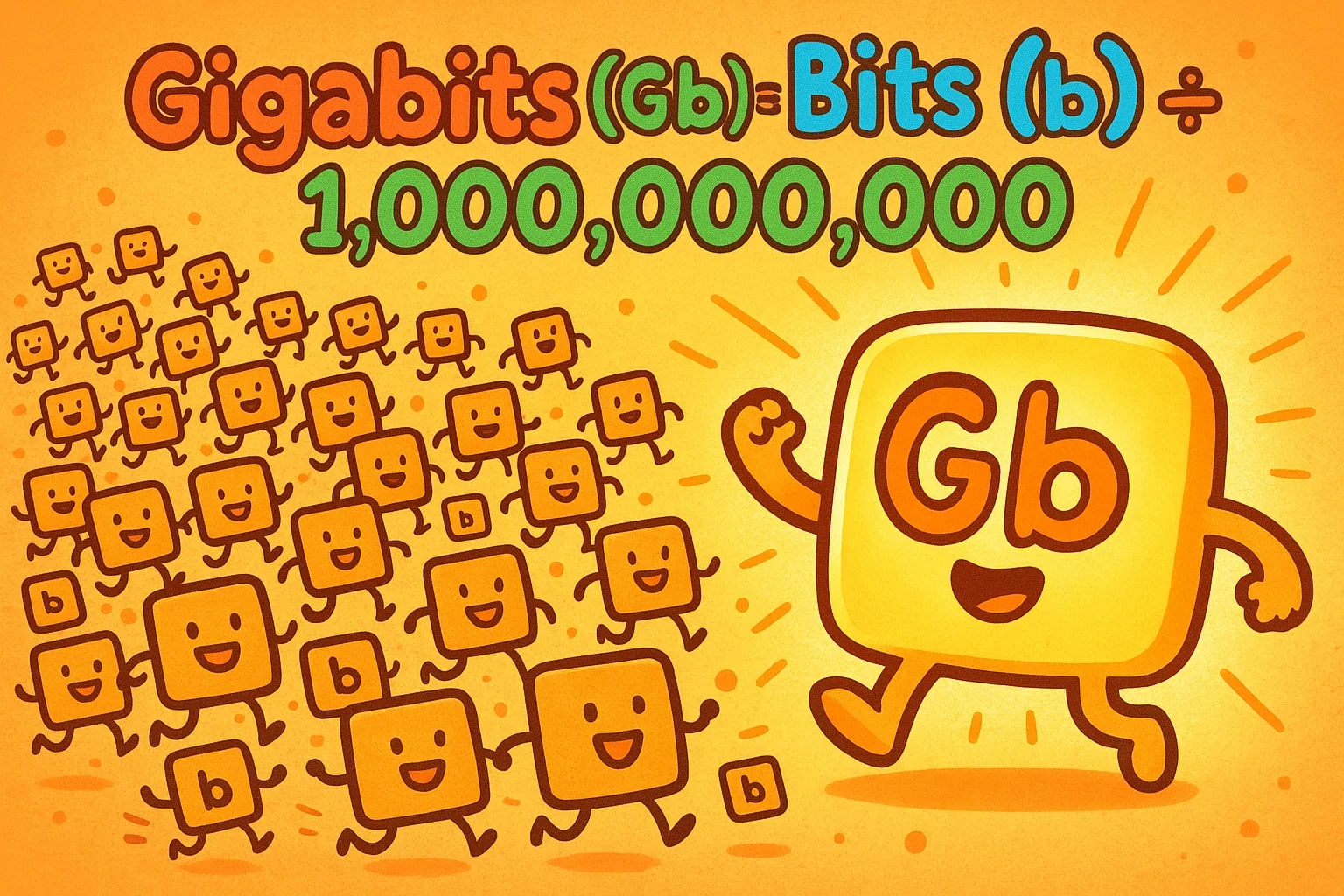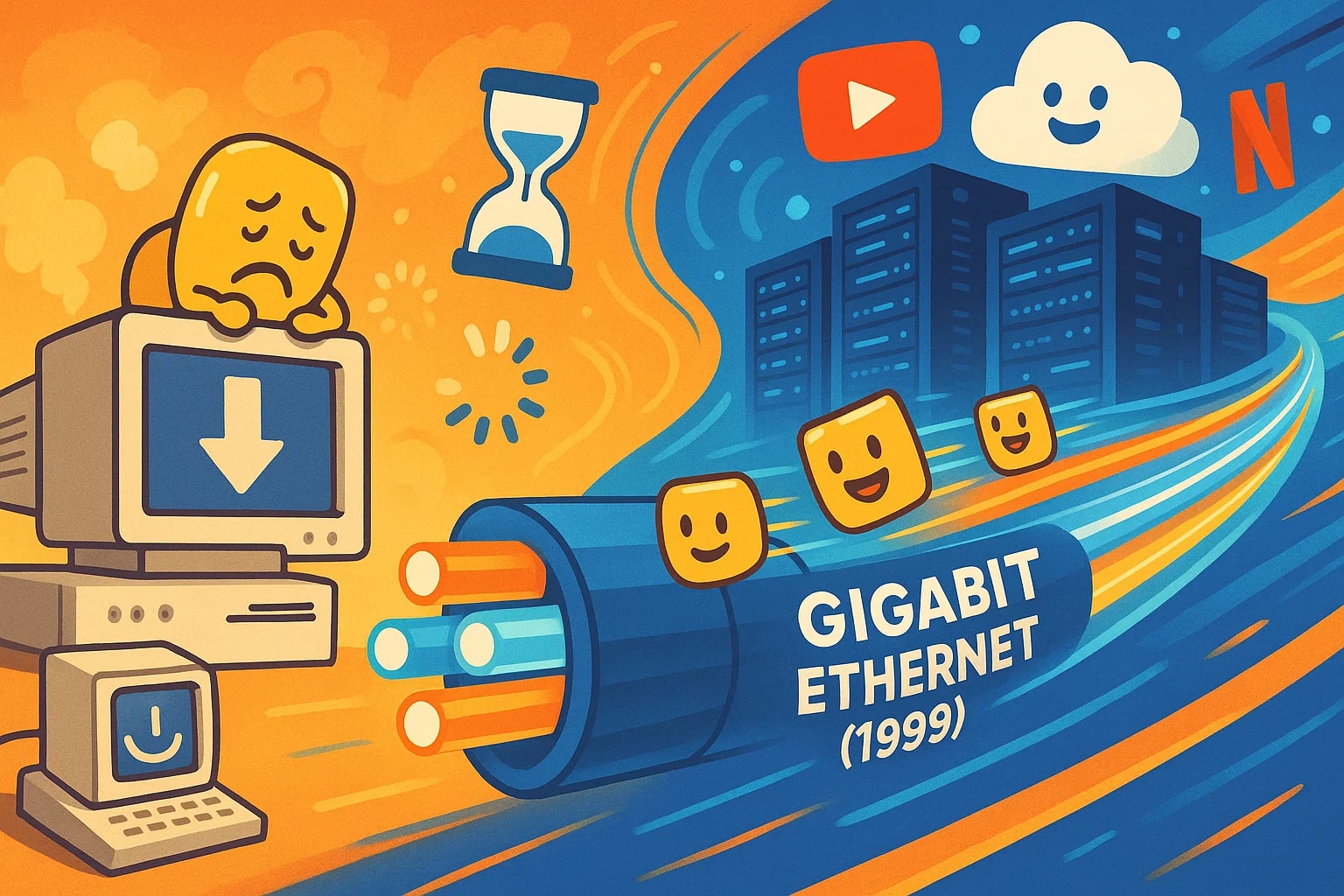Bit to Gigabit – How to convert b to Gb
You’ve probably seen both bits and gigabits when checking internet speeds, file sizes, or transfer rates. But how do they relate? This quick guide breaks down the math behind converting bits to gigabits and uncovers how these tiny digital units became the foundation for everything from social media to deep space communication.

The building block of digital information
The bit — short for “binary digit” — is the smallest possible piece of data in computing. Every email, video stream, and website starts as a long sequence of 1s and 0s. Claude Shannon, widely regarded as the father of information theory, first coined the term in 1948.
Even today, all digital communication, from instant messaging to blockchain networks, is built on bits. Billions of them are created, processed, and transferred across global systems every second.
Gigabits make big data manageable
Handling information at the bit level works for small tasks, but at scale, it becomes impossible to manage. That’s where gigabits come in. One gigabit (Gb) equals one billion bits — a useful unit for measuring high-speed data transfers.
If you’re looking at an internet plan promising 1 Gbps, that means the network can move one billion bits every second. In practice, this translates to about 125 megabytes per second (MB/s), enough for 4K video streaming or fast cloud backups.
Formula for converting bit to gigabit
No need for guesswork — here’s the exact formula:
Gigabits (Gb) = Bits (b) ÷ 1,000,000,000
📌 Example:
4,500,000,000 bits ÷ 1,000,000,000 = 4.5 Gb
Or use our fast and accurate Data Storage Converter to skip the math. For other measurement needs, check our full list of Conversion tools.
Did you know?
-
The world’s first scanned digital image — a photo of a baby — was created in 1957 by Russell Kirsch. It had just 176×176 pixels and totaled roughly 30,000 bits. Today, a single second of 4K video can easily contain over 1 gigabit of data.
-
NASA’s New Horizons spacecraft, which flew past Pluto in 2015, sent its images back to Earth at a glacial pace of just 1 kilobit per second. It took over 15 months to transmit the full dataset across 3 billion miles.
-
Google’s transatlantic cable “Dunant,” launched in 2021, delivers an astounding 250 terabits per second. That’s 250,000 gigabits — enough to transfer the entire Netflix library in a fraction of a second.
-
The first version of Ethernet in 1980 transferred data at just 10 megabits per second. Today, modern data centers can run at 100, 200, or even 400 Gbps — a 40,000× increase in speed in under 50 years.
The tech leap that reshaped digital speed
In the late 1990s, growing websites, email attachments, and the first wave of online video began pushing networks to their limit. Businesses were bottlenecked by 100 Mbps Ethernet, and internet users faced long waits for even basic downloads.
That changed with the arrival of Gigabit Ethernet in 1999, standardized by the IEEE. Almost overnight, server rooms could handle 10× more data, and ISPs started preparing for high-speed home broadband.
Trade publications like Network World documented how the tech was adopted in corporate networks first, then spread to homes in the 2010s as fiber-optic lines became more widespread. Services like YouTube, Netflix, and cloud storage became practical only because gigabit networking could support large-scale real-time data transmission.

Fast conversions, faster connections
Bit-to-gigabit conversion is more than just math — it’s a window into the evolution of how we connect, communicate, and compute. Every streaming movie, video call, and cloud backup relies on this digital foundation.
Need a quick conversion? Try our Data Storage Converter or browse our full library of Conversion tools to simplify any measurement, digital or otherwise.

